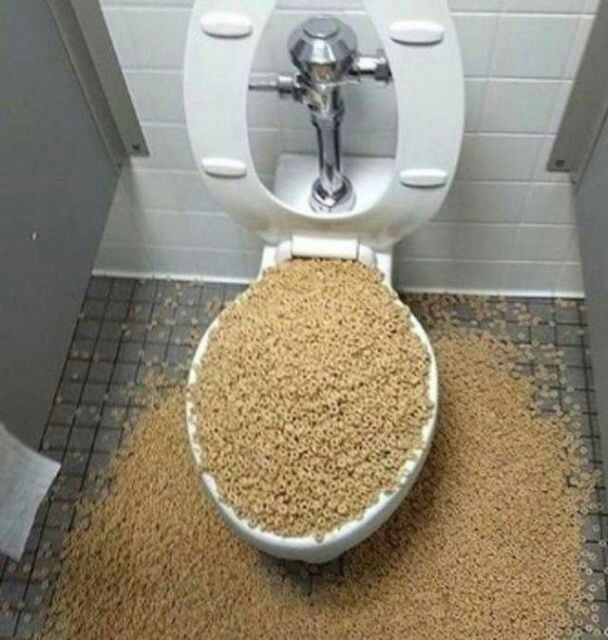The publisher is making a number of good pointers relating to Think Twice Before Flushing Food Down Your Toilet as a whole in this great article following next.

Intro
Many individuals are typically faced with the predicament of what to do with food waste, particularly when it comes to leftovers or scraps. One usual concern that emerges is whether it's fine to flush food down the bathroom. In this write-up, we'll explore the reasons why people might think about flushing food, the repercussions of doing so, and alternative techniques for correct disposal.
Reasons individuals might take into consideration purging food
Lack of awareness
Some individuals may not understand the potential damage brought on by flushing food down the bathroom. They might incorrectly think that it's a safe method.
Comfort
Flushing food down the bathroom might seem like a quick and very easy solution to throwing away undesirable scraps, specifically when there's no nearby trash can readily available.
Laziness
Sometimes, individuals might merely choose to flush food out of sheer negligence, without taking into consideration the consequences of their activities.
Consequences of flushing food down the toilet
Environmental effect
Food waste that winds up in rivers can add to pollution and harm water environments. In addition, the water used to flush food can strain water resources.
Pipes problems
Purging food can bring about clogged pipes and drains, causing costly plumbing repair work and aggravations.
Types of food that should not be flushed
Fibrous foods
Foods with coarse appearances such as celery or corn husks can obtain entangled in pipelines and create obstructions.
Starchy foods
Starchy foods like pasta and rice can soak up water and swell, bring about obstructions in pipes.
Oils and fats
Greasy foods like bacon or cooking oils should never be purged down the commode as they can strengthen and trigger obstructions.
Appropriate disposal techniques for food waste
Using a garbage disposal
For homes furnished with waste disposal unit, food scraps can be ground up and flushed through the plumbing system. Nonetheless, not all foods appropriate for disposal in this way.
Recycling
Particular food packaging materials can be reused, lowering waste and decreasing ecological effect.
Composting
Composting is an environmentally friendly way to deal with food waste. Organic materials can be composted and made use of to enhance soil for horticulture.
The value of appropriate waste management
Minimizing environmental injury
Appropriate waste management practices, such as composting and recycling, aid reduce pollution and maintain natural resources for future generations.
Protecting pipes systems
By preventing the method of flushing food down the toilet, home owners can avoid pricey plumbing repairs and keep the integrity of their pipes systems.
Conclusion
Finally, while it may be alluring to flush food down the toilet for ease, it is essential to recognize the prospective effects of this action. By taking on proper waste monitoring practices and taking care of food waste properly, people can add to much healthier plumbing systems and a cleaner atmosphere for all.
FLUSH FOOD DOWN THE TOILET?
FLUSHING FOOD CAN CAUSE BLOCKED DRAINS IN YOUR HOME
All of the plumbing fixtures in your home are connected to the same sewer pipe outside of your home. This outdoor sewer pipe is responsible for transporting all the wastewater from your home to the Council sewer mains. Even small pieces of food that go down the kitchen sink can cause problems for your sewer. It should therefore be obvious that flushing larger bits of food, such as meat, risks a clog in either the toilet itself or the sewer pipes. Flushing greasy food is even more problematic because oil coagulates when it cools, coating the interior lining of your pipes.
THE TOILET IS NOT A BIN
Food isn’t the only thing that people shouldn’t be flushing down the toilet. People use the toilet to dispose of all kinds of things such as tampons, makeup wipes, dental floss, kitty litter and even underwear. Water goes to great lengths to educate residents about the high costs and stress placed on wastewater treatment systems simply from people flushing the wrong stuff down the toilet. It costs taxpayers millions of dollars each year, and homeowners thousands in blocked drain repairs.
FLUSHING FOOD IS A WASTE OF WATER
Flushing food is a waste of our most precious resource - water. In June this year Level 1 water restrictions were introduced to protect water supply from drought conditions. Much of New South Wales continues to be affected by prolonged drought with recent figures revealing up to 97 per cent of the state remains in drought. Depending on whether you have a single or dual flush toilet, every single flush uses between five and 11 litres of water. In the current climate this is a huge amount of water to be wasting on flushing food that should be placed in the bin (or better yet, the compost).
https://www.jabplumbingsolutions.com.au/blog/can-you-flush-food-down-the-toilet

We were made aware of that editorial on Think Twice Before Flushing Food Down Your Toilet through an acquaintance on a different website. Feel free to take the opportunity to promote this page if you appreciated it. I praise you for your time. Come back soon.
Click Here